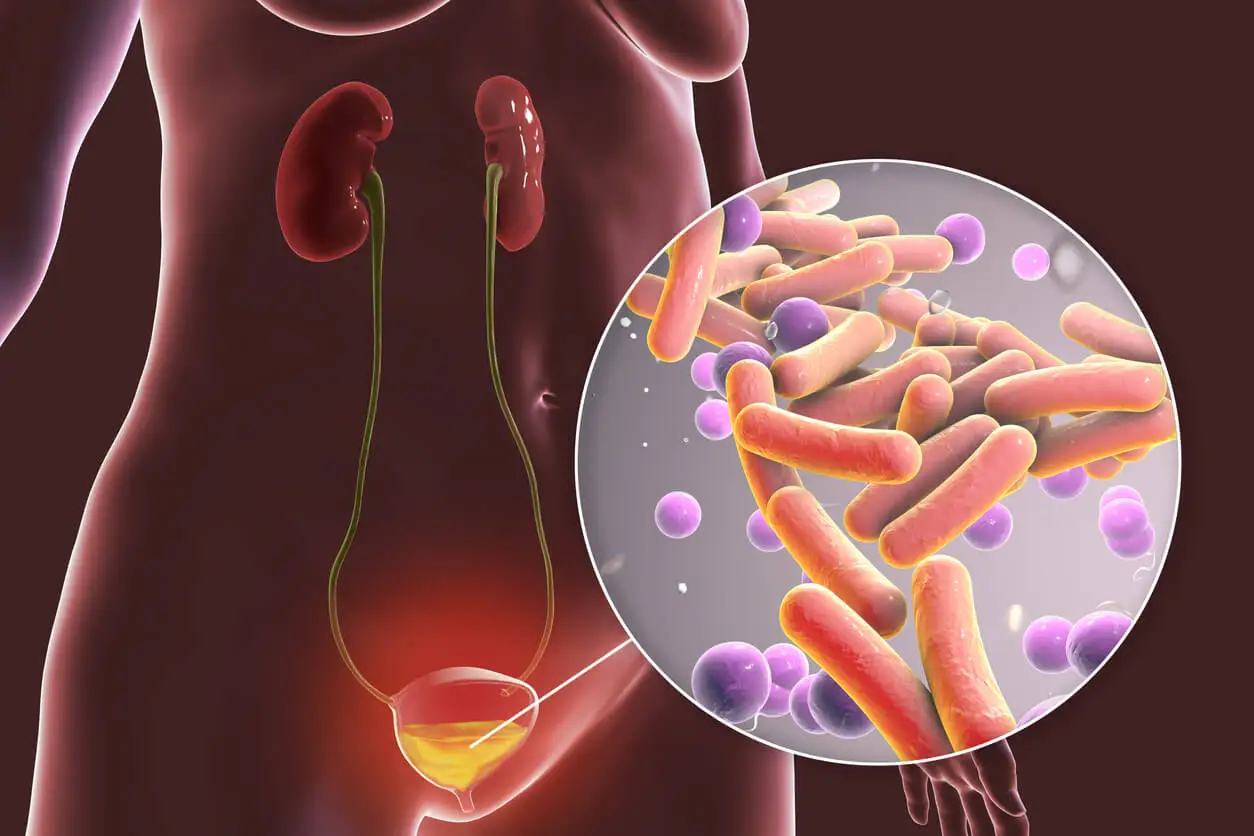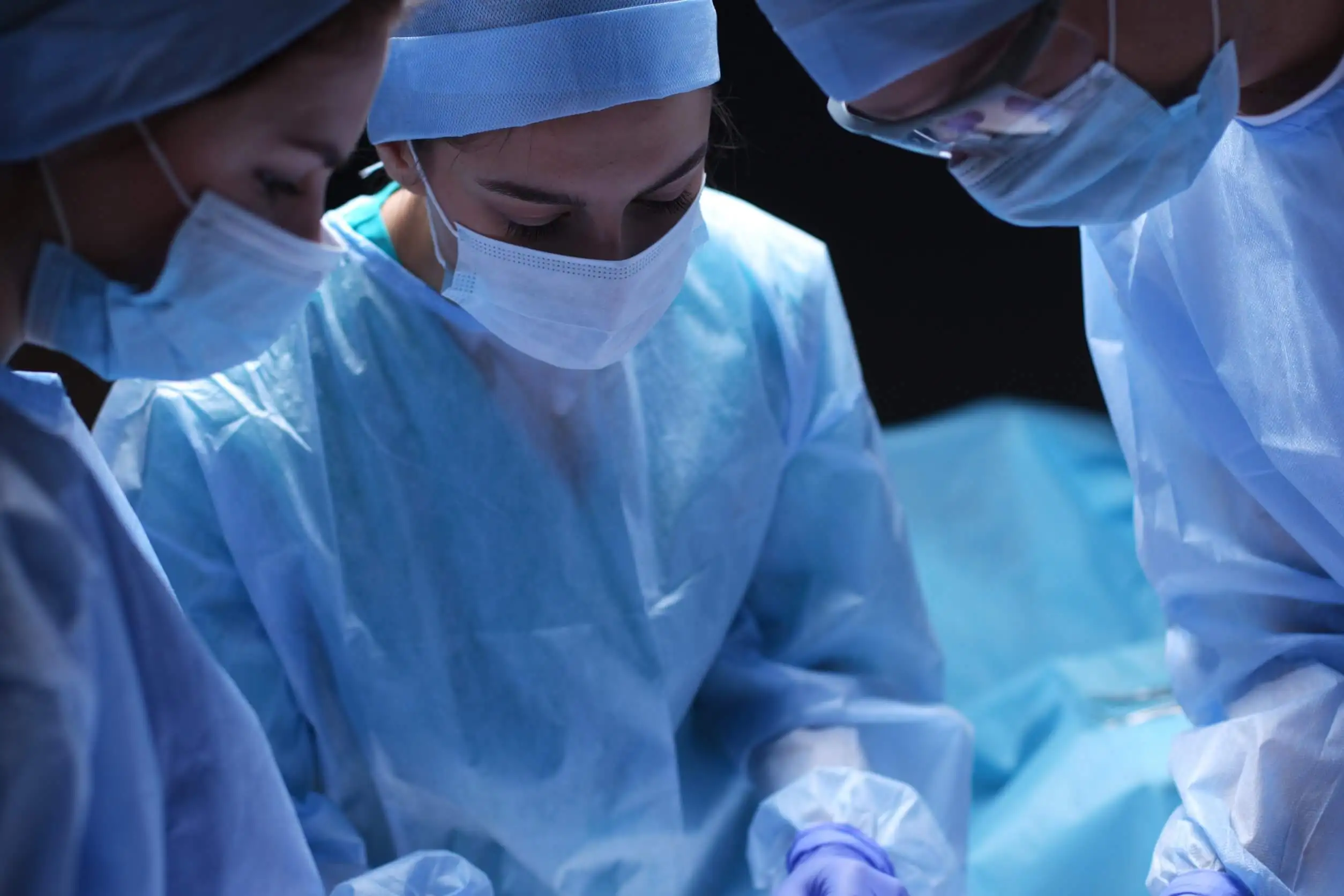Bartholin's Cyst: Symptoms, Causes and How to Treat It


Written and verified by the doctor Maryel Alvarado Nieto
The major vestibular, or Bartholin’s, glands are one of the structures responsible for providing lubrication to the vagina. They are located on each side of the vaginal introitus and are about the size of a pea. They consist of a glandular portion that secretes mucus and a duct, which allows the contents to be poured into the vestibule of the vagina. When this duct becomes obstructed, a Bartholin’s cyst appears.
This cystic pathology is considered the most frequent in the vulvar area and affects women of reproductive age, tending to appear between 20 and 30 years of age. It’s estimated that about 2% of women will develop at least one Bartholin’s cyst or abscess of the gland during their lifetime.
A history of childbirth appears to have a protective effect against gland pathology.
Why does a Bartholin’s cyst occur?
Bartholin’s cyst formation results from obstruction of the most distal portion of the glandular duct. This means that the secretion that’s usually produced cannot drain.
For this reason, mucus accumulates both in the gland and in the more proximal areas of this duct. This retention leads to dilatation of the duct, which will take on a round or ovoid shape.
The conditions under which the gland can become obstructed are diverse:
- Infections of the urogenital tract
- Changes in the characteristics of the secretion
- Congenital narrowing of the duct
- Trauma to the area: these include surgical procedures, including episiotomy
Read more here: Physical Exercise After a Cesarean Section: When to Start?
Is there a relationship with sexually transmitted infections (STIs)?
Although infections are considered possible causes of Bartholin’s cyst, STIs do not appear to have a direct association with it. In fact, the genital infection alone doesn’t cause the obstruction, but it results from the inflammatory process that occurs in response. A Bartholin’s cyst is a result of the infection and not an extension.
In most cases, the cyst’s contents are sterile.
Also, it was believed that being more common in women of reproductive age, the causative agents of STIs could play a decisive role in the formation of the cystic mass. However, more recent studies rule out this association and explain that the higher incidence in this group of women is due to the function of the gland, which tends to involute with age.
Bacteriological examination to confirm the presence of an STI, such as Chlamydia trachomatis or Trichomonas vaginalis, isn’t currently recommended. However, in gland abscesses, it’s considered prudent to detect the presence of an STI. Neisseria gonorrhoeae is a possible agent that can be involved.

Symptoms of Bartholin’s cyst
The cystic lesion tends to be small, and, therefore, usually goes unnoticed, generating no symptoms. However, in larger Bartholin’s cysts, a palpable mass will appear on one side of the vestibule near the vaginal introitus.
The consistency of this enlargement will depend on the associated inflammatory process. In the case of concomitant infection, redness and warmth in the affected area are common.
Some patients report pain of varying intensity, especially during sexual intercourse. However, the pain may be constant, making it difficult to ambulate or to adopt a sitting position, which has an impact on quality of life.
Similarly, palpation of the mass triggers pain.
Another important article for you: Yeast Infections After Sex: Vaginal Candidiasis
How is it detected?
The diagnosis of a Bartholin’s cyst is clinical and is achieved by evaluating the characteristics and location of the enlargement. When, in addition to the mass, there’s the presence of leukorrhea, some authors advise a bacteriological study to detect an STI.
On the other hand, there are other clinical entities that can present with similar symptoms, so they should be considered as possible differential diagnoses:
- Lipoma
- Hydroadenoma
- Skene’s cyst
- Cyst on the canal of Nuck
- Mucous cyst of the vestibule
- Inclusion epidermoid cyst
- Bartholin gland adenocarcinoma
Diagnosis in postmenopausal women
A special population to consider is women who have stopped menstruating. The Bartholin’s gland is connected with age, so the formation of cystic pathology usually declines after the age of 30.
Therefore, although the incidence of cancer in the gland is low, surgical removal is recommended when a mass with these characteristics is evident in postmenopausal women. The purpose is to send the tissue for pathological anatomy.

How is a Bartholin’s cyst treated?
Since, in most cases, it’s usually an asymptomatic pathology, no treatment of any kind is advised. However, when it produces symptomatology, there are two management options: medical and surgical.
Expectant management is recommended in those patients in whom a Bartholin’s cyst is diagnosed for the first time, while, in recurrent cases, surgical management is the option to be considered.
Among the conservative actions, the following are described:
- Prescribing antibiotics, only in the presence of signs of infection
- The use of anti-inflammatory and analgesic drugs
- Application of hot compresses
- Sitz baths
Surgical drainage
Regarding the surgical options, several options are described. Puncture and needle aspiration are considered ineffective, as they have a high risk of recurrence.
The two safest techniques are drainage with a Word catheter and marsupialization. Although they’re the most recommended, they also incur the risk of recurrence. In addition, they involve the generation of scar tissue.
Word catheter drainage consists of the placement of a catheter through a small incision made over the Bartholin’s cyst, which is secured with an inflatable balloon. The function of the catheter is to serve as an artificial conduit to allow drainage of the gland.
The great advantage of this method is that it allows the formation of a new tubule that follows the path of the catheter. The disadvantage is that the Word catheter must be kept in place for a few weeks.
On the other hand, with marsupialization a larger incision is made, avoiding the walls of the cyst towards the vestibule. The purpose is to allow drainage of the gland, but it carries a higher risk of infection. In addition, it may result in bruising and cause dyspareunia.
The last surgical option is the excision of the gland. Although unusual, it’s quite effective. However, it should only be considered in extreme cases and in women over 40 years of age.
What are the complications?
The main risk of Bartholin’s cyst is recurrence.
Because of this, treatment should be evaluated with caution, and cases with surgical resolution should be managed by a specialist. Likewise, previous interventions should be taken into account, as they could compromise the results.
Another complication described is Bartholin’s abscess, in which the gland becomes infected by microorganisms belonging to the flora of the perineal region. This changes the approach and constitutes a different pathology.
All cited sources were thoroughly reviewed by our team to ensure their quality, reliability, currency, and validity. The bibliography of this article was considered reliable and of academic or scientific accuracy.
- Hoffman, B.; Schorge, J.; Schaffer, J.; Halvorson, L.; Bradshaw, K.; Cunningham, G.; Williams Ginecología; Segunda Edición; Mc Graw Hill; 2014.
- Sánchez, E.; Manejo de Abscesos y Quistes de Bartholino; Revista Médica Sinergia; 4 (8); e310; 2019.
- Omole, F.; Simmons, B.; Hacker, Y.; Management of Bartholin’s Duct Cyst and Gland Abscess; American Family Physicians; 68 (1): 135 – 140; 2003.
- Elkins, J.; Hamid, O.; Simon, L.; Sheele, J.; Association of Bartholin Cysts and Abscesses and Sexually Transmitted Infections; The American Journal of Emergency Medicine; 44: 323 – 327; 2021.
- Reif, P.; Ulrich, D.; Bjelic-Radisic, V.; Häusler, M.; Schnedl-Lamprecht, E.; Tamussino, K.; Management of Bartholin’s Cyst and Abscess using the Word Catheter: Implementation, Recurrence Rates and Costs; European Journal of Obstetrics and Gynecology and Reproductive Biology; 190: 81 – 84; 2015.
- Rivas, É.; Quiste Gigante de la Glándula de Bartolino: Reporte de Caso y Revisión de la Literatura; Revista Colombiana de Obstetricia y Ginecología; 61 (4); 2010.
- Delgado, F.; Absceso de la Glándula de Bartolino; Revista de la Facultad de Ciencias Médicas de Córdoba; 77 (4): 345 – 350; 2020.
- Domínguez, E.; García, L.; Martínez, M.; García, A.; Cubillo, L..; Galván, R.; Periné Femenino: Revisión de Anatomía y Patología; Sociedad Española de Radiología Médica.
This text is provided for informational purposes only and does not replace consultation with a professional. If in doubt, consult your specialist.








